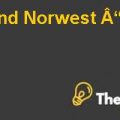SVEDKA VODKA Case Study Solution
Introduction:
The case is related to market evaluation depending on historicdata of Vodka market in the US. The content of the case is dividedintofourelements, Product; Price; Advertisement; Distribution.
Alcoholic drinks were banned between 1919 and 1933 and at the end of this period, the industrywas distributed between three segments: manufacturers, distributer and sellers. The idea was that any company that would deal in any one of these three tiers and not more. Hence, US government also implemented additional restriction upon the operators of this Industry.
The market was introduced with vodka super-premium (750ml) by Grey Goose in 1997. Although the prices of all three categories (Value brand, premium, and super-premium) varies brand to brand and state to state. But cases were mostly distributed in 9 L packaging.
The years ranging from2000 to 2007 was vital for the vodkamarket. Vodka grew in the sense of flavor, brand, and packaging in these years,up-till 2007 around $200million were spent on advertisement in vodka industry.
SVEDKA VODKA Harvard Case Solution & Analysis
Printing advertisementswere very common among Liquor brands in early age, but Absolut’s innovated campaigns,which began,in 1980were most effective among all.However, the fear of public outcry prevented Vodka manufacturers and dealers from advertising in television, until 1996 when Crown Royal and Lime Twisted Gin were advertised by Seagram’s.
This report is to assist the founder of SVEDKA, Guillaume Cuvelier with US market research on VODKA industry, mainly dependent on historic data, to evaluate consumer’s resistance, government’s restrictions and market’s opportunities.
Core Opportunities:
Vodka industry in the USis well developed and matured. It has grown into a tremendous size in the20th century and currently has hundreds of brandsand variety of flavors, size, and packaging.
Even with so much competition, there is a wide scope for opportunities that can be availed by current brands or a new entrance. Thoughstandards are set by individual companies,the industry as a whole has no rigid standard packaging or pricing. There is an opportunity for new comers, who can test start intheir pilot period by selling vodka insizes and prices that are feasible to them. Even with federal restrictions, rules varies state to state, giving the dealers a variety of regions to choose from for operating. The most valuable element of this market like any other market is the consumer demand, which luckily in the US is sufficiently high to accommodate all the range of brands.
Core Problems:
The industry of Alcoholic drinks always has and always will face stiffresistance from some groups among thepublic. These critics are focused on the alcohol’s harmful effects on health. In support of these, thegovernment of US has imposed many restrictions upon Vodka dealers; theselimitations can create problems for anewcomer in the industry. One of the core problems with this industry is that one dealer can only operate in one of three divisions (Manufacturing, Distribution, and selling), hence cannot expand vertically. Expansion for a company operating in one state, aiming to shift to other states can also be problematic if the target state has arestriction that contradicts with company’s operation style of policies.
Conduct a SWOT analysis: Identify at least 5 Strengths, Weaknesses, Opportunities, and Threats:
SWOT Analysis is the method of measuring an industrythrough evaluation of measures of a company or industryby highlighting four elements. These highlighted elements are then used for the accomplishment of and achievement of the company, by overcoming the drawbacks and proceeding towards the benefits.
Highlighting strengths helps a company to use these for acquiring benefits
Buy knowing weaknesses; the organization can take steps to overcome these shortcomings or at-least put a guard on them.
Opportunities are recognized so that the organization can use its strengths for capturing these opportunities.
Threats are highlighted so that timely steps can be taken to avoid the risk relating to these threats, or accept the threat if it is immaterial.
Strengths:
The most difficult task for any manufacturer or trader is to create a sense of acceptance for his product in the target market. But Vodka is not a new product and therefore already has an established market. Thus any firm willing to enter this industry does not need to create the demand, as the demand already exists and can straight away start by supplying to these demands.
Since the invention of Vodka, there have been hundreds of manufacturers and dealers in the market all around the world, which means that a general recipe of manufacturing Vodka can probably be foundeasily in the market. Hence, the firm considering to enter the market can at-least start production without the need of research on theproduction method.
There are a variety of vodka flavors, which means that consumer’s resistance to new flavors would be little if SVEDKA decides to deal in new flavors.Henceforward, it would be wise to use this sense of receptiveness among consumers and introduce new flavors for the sake of capturing market before someone else does..............
This is just a sample partial work. Please place the order on the website to get your own originally done case solution.












